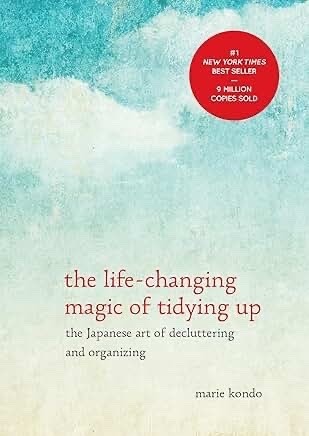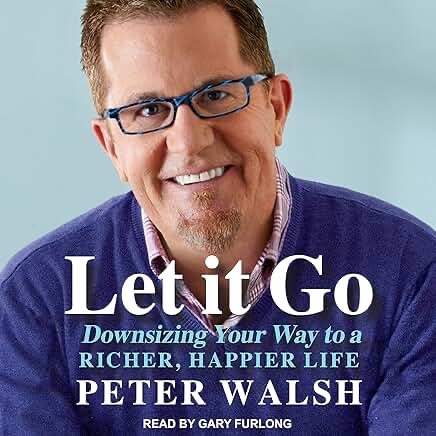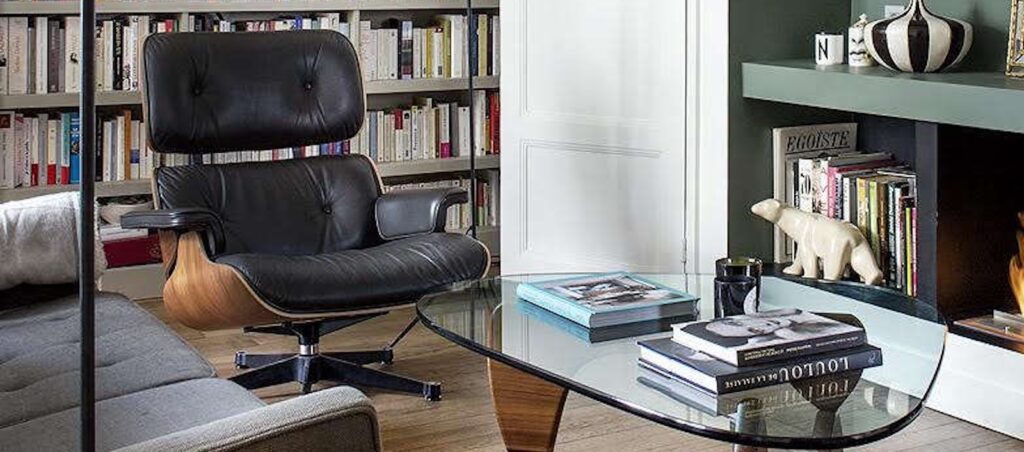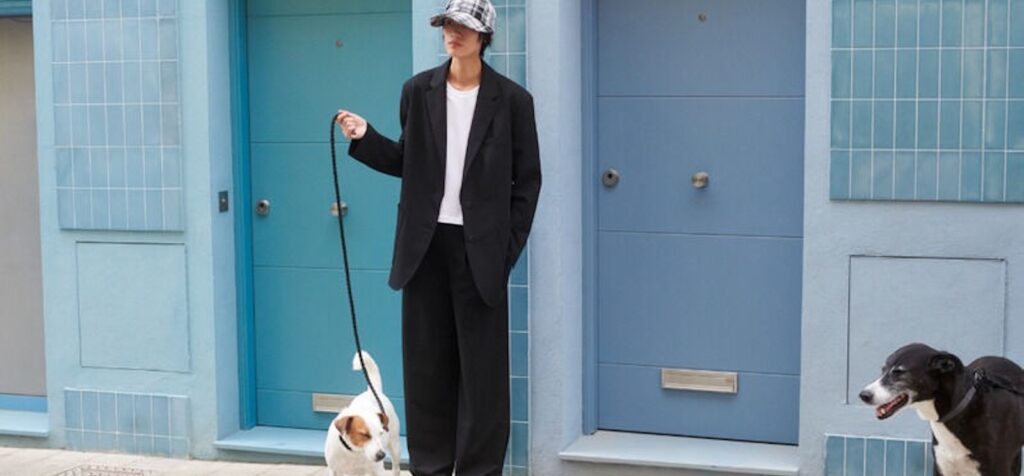
Four years ago, I moved from a big four-bedroom house with a double garage and a large garden, to a little two-bedroom Victorian cottage. It wasn’t a choice I made willingly, but one made out of financial necessity. Looking back now though, I realize it was the best decision I could have made. Downsizing changed my life for the better. It restored my confidence, gave me more freedom, less stress, and opened up all sorts of new possibilities. Going through the actual process of downsizing wasn’t easy though. So, in this post, I’m going to talk honestly and openly about the upsides and challenges of downsizing in your 60s based on my own experience.
One point I would like to make up front is that the benefits of downsizing are long-term. The challenges are short term. Yes, you will have to go through some major disruption, effort, and pain to get to where you want to be. But in my experience, it’s a journey worth taking.
Disclosure: As an Amazon Associate, I earn from qualifying purchases. That means that if you choose to make a purchase after clicking a link, I may receive commission at no extra cost to you.
What do I mean by downsizing?
In your 60s, downsizing means simplifying your living situation as you get older. It’s about moving from a big home to a smaller one, with fewer things and less upkeep needed. This change can bring lots of benefits and improve your quality of your life overall.
The benefits of downsizing in your 60s
Financial
This was my reason for downsizing. When I made the decision to sell my big house, I was sixty years old, and my husband Tim had been suffering from early onset dementia for twelve years. I had cared for him myself for seven of those years, and he had been in residential care for the last five. As a result, our financial situation was not good!
I managed to just keep our heads above water, but money was a constant stress. I lived in dread of the next unexpected expense; the car breaking down, the washing machine needing to be fixed or the fences blowing down in a high wind.
By selling up and moving to a smaller, more manageable home, I was able to free up equity and put away some money for the future. Moreover, downsizing allowed me to make considerable savings on utility bills, maintenance, and property taxes.
If your current or future financial security is an issue, then downsizing is something you should certainly consider. Take professional advice though, and make sure that what you are planning to do will actually result in the financial benefits you’re looking for.
Simplified lifestyle
Another compelling reason for downsizing in your 60s is the opportunity to embrace a more simplified lifestyle. Downsizing can facilitate a shift towards a more manageable living environment that better aligns with your over 60 lifestyle needs.
This was an added and surprise bonus for me. In addition to the financial benefits of downsizing, I’ve discovered that having less stuff equals having considerably less stress. By rigorously decluttering and carefully curating what I took to my new house, I’ve significantly improved my overall quality of life. As a result, I’m now a committed advocate of the ‘Living with Less’ tribe.
Living with less promotes a minimalist lifestyle that encourages mindfulness and intentional living. By streamlining your belongings, you can cultivate a sense of contentment and appreciation for the things you do have, rather than those you don’t. A commitment to fewer material things also means that you will spend less on ‘stuff’ and have more time and money for the things you enjoy most.
“The more things you have, the more things you have to manage. Simplicity isn’t merely cheaper, it’s easier.” – James Clear
Reduced maintenance
One practical benefit of downsizing is the reduced maintenance that comes with a smaller home. As we age, keeping up with the maintenance demands of a big house can become really challenging. Downsizing allows you to enjoy a more manageable living space, requiring less time and effort for upkeep. This frees up your time to focus on activities that bring you joy rather than on endless household chores.
One of the things I used to really dread when my husband became ill, was the upkeep of our big garden. It ceased to be a pleasure and became an absolute drudge. The grass always seemed to need cutting and the maintenance of the massive hedge at the front of our property used to fill me with anxiety and guilt. What would the neighbours think if I didn’t get it done? Thankfully that responsibility, along with many others, is no longer mine. I now have just a tiny garden to worry about. It’s just big enough for the dog and me.
A fresh start
For me, selling the house where I had lived for 20 years represented a fresh start. Yes, it was emotional and hugely challenging to let it all go, but doing so allowed me a reset, a chance to start over and rethink how I wanted the next stage of my life to be.
The challenges of downsizing in your 60s

There are challenges to downsizing, but the good news is that most of them are short-term. You’ll only have to go through them once, then you can put them behind you and move on to your new life.
The emotional impact
The hardest thing about downsizing is letting go of the past. You have to walk away from the home that you’ve lived in for many years, where you’ve raised your family, and where all your precious memories were made. You have to sort through everything you own and decide whether each item goes with you, gets donated, sold, or binned. It’s really hard.
I cried buckets over the decluttering part, particularly sorting through my husband’s things and all of the stuff that held memories of our life together. I knew that he would never come home to see or use any of his things again. It was emotionally painful, and the sense of loss was overwhelming. I had to just push on through and try to focus on what came next.
Emotional attachment to belongings is one of the most significant hurdles when downsizing. Over the years, we accumulate so many items that hold sentimental value or memories. Letting go of these things can evoke a sense of loss or nostalgia, making it emotionally draining to declutter and downsize. In my experience, it’s essential to acknowledge your feelings and approach the process with self-compassion.
I kept all of the things that held real emotional value, and got rid of the rest. Certain items of my husbands I gave to friends who I knew would cherish them in his memory. The rest were given to charity or disposed of. I still have the beautiful black and white coffee set he bought for my birthday on my mantlepiece, and there are many other significant pieces dotted around my little home. You don’t have to get rid of everything. Prioritise the really important things, take them with you and enjoy them every day. You’ll see them better without all of that other clutter around them.

My advice would be, find someone you love to help you to sort through everything. Someone who is OK with you crying and blubbering, but who also helps you to make the tough choices. My son was absolutely brilliant. It was very much his loss too, but we got through it, and I really believe that the whole experience helped us both to move forward.
Stress of selling and buying homes
Co-ordinating the selling and buying of two houses is always challenging, and particularly so in the UK where the process is longwinded and precarious right to the last. Take your time, particularly on deciding where you want to move to.
If you are considering moving to a completely different location, I would definitely recommend that you really do your homework and spend some time in the area first. Consider taking a long holiday there or maybe renting in the area before you commit to buy.
Moving house is considered one of the top ten most stressful things to do in life. And when it is done by someone in their sixties it often coincides with other stress factors: For instance, the death of a spouse, a divorce, or retiring from the workforce. So, be kind to yourself. take your time to consider your options and don’t be rushed. While you’re looking and deciding where you want to live you can start decluttering. Then, when you decide where you want to live and put your house on the market, it will be decluttered and ready for sale viewings. Better still, you’ll also be ready to go once the purchase and sale are finalised.
Adjusting to a smaller space
Moving into a smaller space can be a significant adjustment, but with the right mindset and strategies, it can also be a rewarding experience. Embrace the process of downsizing by decluttering and organizing your belongings. Prioritise emotionally significant and essential items and get rid of the rest.
Really think about what furniture you will take with you. Does the big sofa you have really work with the dimensions of your new space, or should you let it go and buy a new one? Over stuffing a small room with furniture makes it feel even smaller and difficult to live in. Think, less is more. Make use of multifunctional furniture and clever storage solutions to maximize space and maintain a sense of openness in your new home. One tip I have found is that glass tables and coffee tables work really well in smaller spaces as the eye travels through them rather than being stopped on a solid surface.
The one thing I really miss in my new house is wardrobe space. In my old house I had four double wardrobes to store my clothes and now I only have about a third of that. I have to be much more organised and thoughtful about what I clothes I buy and what I keep.
Tips for downsizing successfully

Be clear on your objective?
Downsizing in your 60s is a major project, and like any other project, to be successful you have to be really clear on your objective. What is your desired outcome? If it’s financial security, then what does that mean? Is it X amount invested for your future plus a fully paid for new home? Or do you want to move to be closer to family or friends? Are you looking for a different lifestyle, a fresh start? Whatever your objective is try and define it as clearly as you can. Doing so will help you to ensure that your plan takes you to where you want to be. It will also help you to get through the challenges mentioned above if you can see that your efforts are taking you to a place you want to go.
I had a clear financial objective when I downsized and that helped to frame all of the tough decisions I had to make.
Make a plan
As an ex-project manager I love a plan. So, my advice is, once you make the decision to downsize, start making that plan.
Set a realistic timeline
Don’t rush yourself, set a realistic timeline. There are 4 major components to downsizing which are going to take up most of your time:
- Deciding where you want to live
- Selling your existing home
- Decluttering
- Moving
Start by thinking about how long is it going to take you to do each of these. Will they happen simultaneously or consequentially? In my experience simultaneously is best for the first three. Step 4 , Moving, is obviously the final stage, and can’t be done until the other stages are complete. Don’t leave the decluttering until last. It’s a long process, so get a head start and begin now. Be realistic and set yourself a target date for completion. Setting a date will help to focus your efforts and build momentum.
Break tasks into smaller steps
Next break these 4 big items into individual tasks, and then break each task into smaller steps. For instance, in deciding where to live you might break this down into tasks of say, researching the area, shortlisting locations/houses, hiring an agent and organising viewings. Whatever suits your circumstances.
Then break each of these tasks into smaller items. How are you going to research the area? What are the steps? Add timings to all of these items. Does your initial timeline still look achievable? If not reset it. It’s more important to do it right than to do it fast. Having said that though, if you’ve decided downsizing is what you want to do, keeping up the momentum is key if you actually want to get to the finish.
Start decluttering asap
Decide on a methodology
There are 2 main methodologies for decluttering. You can either do it room-by-room or by using the Marie Kondo method. The room-by-room method is exactly as you would imagine. You go through each room, one at a time, deciding what to keep and what to discard. The Marie Kondo method focuses on sorting by category. You begin with clothing and then move on to books, papers, komono (miscellaneous items) and finally, sentimental items.
If you want to know more about the Marie Kondo method you can read about it on her website here, or in her best-selling book, The Life-Changing Magic of Tidying Up.
The KonMari Method is a simple but effective decluttering method, that ensures that you will never relapse into clutter again. It uses a unique selection criterion – choosing what sparks joy! You are not choosing what to discard but rather choosing to keep only the items that speak to your heart. The message is that, through tidying, you can reset your life and spend the rest of your life surrounded by the people and things that you love the most.
Another book that I found really helpful for those of us downsizing in our 60s, is Peter Walsh’s Let it Go: Downsizing, Your Way to a Richer, Happier Life.
Decluttering guru Peter Walsh knows the difficulty of downsizing firsthand. Along with six of his siblings, he went through the process of downsizing his family home and dividing his late parents’ possessions. He realized that making these decisions about mementos and heirlooms creates strong emotions and sometimes sibling rivalries. After this experience, he downsized his own home. Peter doesn’t see downsizing as a difficult chore – rather, it’s a freeing, rejuvenating process.
Conclusion
Downsizing in your 60s is a major life decision. So, take your time, think about why you are doing it, and keep that as your focus. If you decide that downsizing is right for you, create a plan, give yourself space, and take it one step at a time. Remember, the challenges are painful but short term, the benefits, if you do it right, will last your lifetime.
Thank you for reading this post. I would love to read any comments you might have, so please don’t hesitate to write in the comments box below. You might also like to subscribe to my newsletter.
Sian. x







Utterly brilliant article Sian. So practical as well as engaging and emotional – thank you for sharing
Dermot
Thank you Dermot.
Sian. X
What an excellent and helpful post. While we don’t need to downsize, at this point, as our home is small, we are working on downsizing / purging possessions. It’s so easy to let things pile up and keep things, “just in case”, etc. I’m being as ruthless as I can, “Am I really ever going to use this? Out!” I’ve done lots of shredding, tossing, passing on to someone else, and donating. It’s a slow process, but consistently keeping at it wins the day!
Hi Jeannine
Thank you so much for your comments. I totally agree with you about letting things pile up. I think that we just have a compulsion to fill up every available space with stuff until we run out or have to move! I think what you are doing is absolutely spot on and that steady consistency is the key. Do you find it cathartic? I felt a great sense of a weight lifting as I whittled down the cupboards of stuff.
Sian. X
I’m a big fan of Marie Kondo and used her methods when we moved from Hawaii back to the mainland. I’m always surprised how the emotional part of downsizing gets me every time.
Hi Kate,
I totally agree about the emotional side. When you let go of that item it’s as if you feel you’ll loose all the memories attached to it. It’s hard to let go of the past and move forward.
Sian. X
Thank you for this! I feel like someone “gets” what I am going through. So many well meaning people have advice meant to help but that doesn’t acknowledge the hurt of the process or the reasons to do it in the first place. Thank you for the validation.
Hi Tam,
I’m so glad this was of help to you. I found this article quite tough to write, simply because it was so personal. It’s great to know that it connected with you.
Sian. x